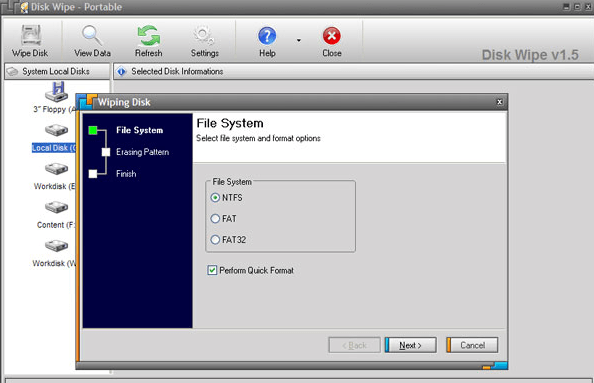

From now on the following CAUTION will be applicable.ĬAUTION: Do not proceed with this if the target drive is not connected directly to a SATA/NVMe interface. echo $(($(df -output=size -B1 /dev/sda | tail -1)/4096))įor NVMe or SATA SSD, read on. To calculate count=, you can use the following command. Please note that you need to use count= otherwise you will get dd: error writing '/dev/sdX': No space left on device Or, sudo dd if=/dev/random of=/dev/sdX bs=4096 count=2013054 status=progress Or, sudo dd if=/dev/urandom of=/dev/sdX bs=4096 count=2013054 status=progress sudo dd if=/dev/zero of=/dev/sdX bs=4096 count=2013054 status=progress In case of HDD, you can use the following commands. Beware that some parts of your disk will not be erased - use the drive firmware "SECURE ERASE" command, such as via hdparm, to properly clean off a disk.ĬAUTION: Don't zero-fill an SSD, ever.Read the manpage for shred online or by typing man shred in the terminal.Apply the changes by click the Apply button (the green checkmark) in the toolbar. Then add a single partition that uses all of the unallocated space on the device, choosing fat32 as the file system. Then select Device -> Create partition table to create a partition table on the device. The easiest way is to install GParted and use it: sudo apt-get install gpartedĬhoose your device in the upper-right corner list. sudo shred -v -n1 -z /dev/sdXĪfter this, you would have to repartition the device. You can also set all bits to zero after the last iteration by adding the option -z, I prefer to do this. This might take a while, depending on the size of your external hard drive (I think it takes twenty minutes or so for my 4 GB flash drive). You can add the option -n N to only do this N times, to save time on large capacity devices. This will overwrite all the blocks on the device with random data three times, the -v flag is for verbose and will print the current progress.

Then run the following, replacing /dev/sdX with the name of your device: sudo shred -v /dev/sdX Unmount all currently mounted partitions on that device, if any. Make sure it is the correct device, picking the wrong device will wipe it. You can use sudo fdisk -l to list all connected storage devices, and find your external hard drive there. This might be something like /dev/sdb or /dev/hdb (but not like /dev/sdb1, that's a partition). There's a command-line utility called shred, which overwrites data in a file or a whole device with random bits, making it nearly impossible to recover.įirst of all, you need to identify the name of the device.


 0 kommentar(er)
0 kommentar(er)
